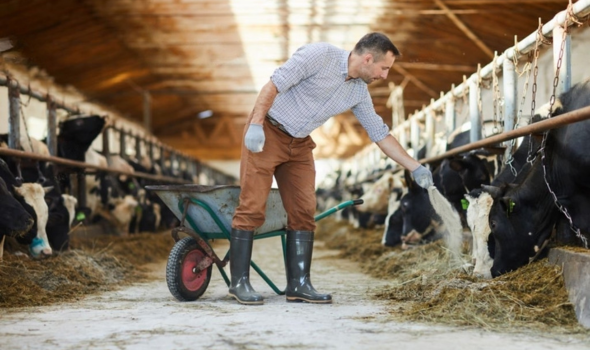
Ruminants
The switch to sustainable feed resources will increase even more in the future.
The term “sustainability” has become highly prominent in recent years. It is a practice of safeguarding the natural resources and ecological systems of our environment. This is done to meet the requirements of the present and to secure the needs of future generations. At Natural Remedies, we have the highest regard for sustainable practices and development within our operations.
The livestock industry has a major impact on the usage of key natural resources like energy, land, and water. The usage of abundant water in farms for drinking purposes, bathing, cleaning, and sanitation; the release of harmful greenhouse emission gases into the air, and the vast spaces of land used for rearing and grazing the animals have far-reaching effects on our environment. Additionally, traditional feed resources are associated with soil degradation, deforestation, and all forms of environmental pollution.
Hence, it becomes important for livestock farms to adopt sustainable practices. One such practice is the use of sustainable feed resources to feed farm animals. Below mentioned are some of the sustainable feed resource options that should be adopted and implemented by livestock owners.
By-products:
Certain by-products of crops can be extracted after eliminating the main components required for human use. This form of feed can be fed to the cattle thereby reducing waste. Post-harvesting of crops like wheat, ragi, jowar, and rice, the leftovers in the form of husks and straws can be fed to the animals providing them added nutrition and minimizing the crop waste. Sugarcane bagasse (crushed sugarcane) is another excellent form of residue that can be recycled to feed animals. These by-products are a sustainable option for cattle feed resources.
Pastures for grazing:
Efficiently organized pastures should be used for cattle grazing. Cattle feeding on natural grass, and forage crops is one sustainable option that reduces the need for grain feeding.
Algae:
Chlorella and spirulina, when processed are types of microalgae that can act as cattle feed supplements that are rich in protein and other vital nutrients.
Plant-based proteins:
Pea-protein is growing in popularity and is being widely used as a plant-based source of protein due to its high content of amino acids and lysine.
Environmental Impact:
The sustainable approach to feed resources can improve the condition of the environment like decrease in the emission of greenhouse gases, efficient water use, minimizing habitat loss and deforestation due to lesser use of land, and reducing the waste that we dump into our earth.
Economic Impact:
Adopting sustainable feed resource practices leads to an increase in profitability for livestock owners as that will help to minimize the cost of conventional feed production. The long-term viability associated with the sustainable approach is why it is important for farmers to adopt these practices.
Educating and spreading awareness about these practices are an important steps to achieving a sustainable environment.
Hence the switch towards sustainable feed resources, a vital step for environmental protection is important and will increase in the coming years due to the ecological and economic benefits that it carries.









Add your comment